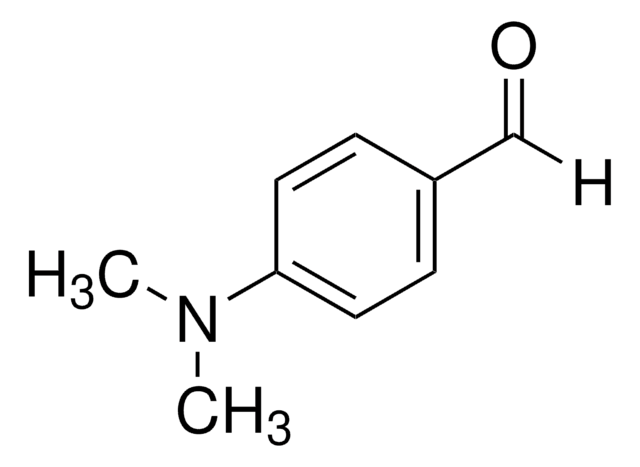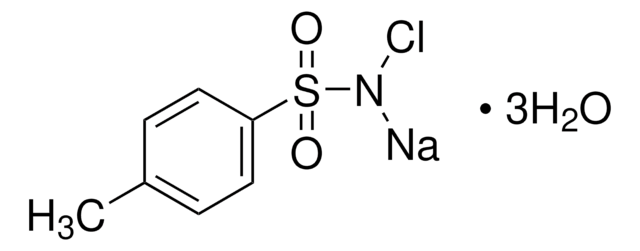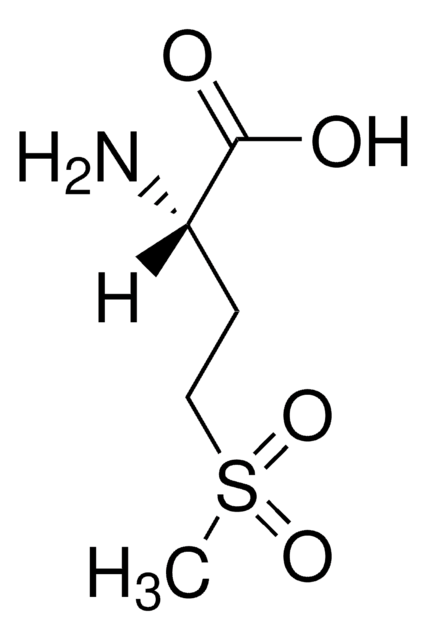Wichtige Dokumente
56250
Trans-4-Hydroxy-L-Prolin
≥99.0% (NT), BioXtra
Synonym(e):
(2S,4R)-4-Hydroxy-pyrrolidin-2-carbonsäure, Hyp
About This Item
Empfohlene Produkte
Produktbezeichnung
Trans-4-Hydroxy-L-Prolin, BioXtra, ≥99.0% (NT)
Produktlinie
BioXtra
Qualitätsniveau
Assay
≥99.0% (NT)
Form
solid
Optische Aktivität
[α]20/D −76.0±1.5°, c = 5% in H2O
Verunreinigungen
≤0.3% foreign amino acids
Glührückstand
≤0.1% (as SO4)
Verlust
≤0.1% loss on drying, 110 °C
Farbe
colorless to white
mp (Schmelzpunkt)
273 °C (dec.) (lit.)
Anionenspuren
chloride (Cl-): ≤100 mg/kg
sulfate (SO42-): ≤100 mg/kg
Kationenspuren
Ca: ≤10 mg/kg
Cd: ≤5 mg/kg
Co: ≤5 mg/kg
Cr: ≤5 mg/kg
Cu: ≤5 mg/kg
Fe: ≤5 mg/kg
K: ≤50 mg/kg
Mg: ≤5 mg/kg
Mn: ≤5 mg/kg
NH4+: ≤100 mg/kg
Na: ≤50 mg/kg
Ni: ≤5 mg/kg
Pb: ≤5 mg/kg
Zn: ≤5 mg/kg
Anwendung(en)
peptide synthesis
SMILES String
O[C@H]1CN[C@@H](C1)C(O)=O
InChI
1S/C5H9NO3/c7-3-1-4(5(8)9)6-2-3/h3-4,6-7H,1-2H2,(H,8,9)/t3-,4+/m1/s1
InChIKey
PMMYEEVYMWASQN-DMTCNVIQSA-N
Suchen Sie nach ähnlichen Produkten? Aufrufen Leitfaden zum Produktvergleich
Biochem./physiol. Wirkung
Sonstige Hinweise
Lagerklassenschlüssel
11 - Combustible Solids
WGK
WGK 1
Persönliche Schutzausrüstung
Eyeshields, Gloves, type N95 (US)
Hier finden Sie alle aktuellen Versionen:
Besitzen Sie dieses Produkt bereits?
In der Dokumentenbibliothek finden Sie die Dokumentation zu den Produkten, die Sie kürzlich erworben haben.
Kunden haben sich ebenfalls angesehen
Unser Team von Wissenschaftlern verfügt über Erfahrung in allen Forschungsbereichen einschließlich Life Science, Materialwissenschaften, chemischer Synthese, Chromatographie, Analytik und vielen mehr..
Setzen Sie sich mit dem technischen Dienst in Verbindung.



